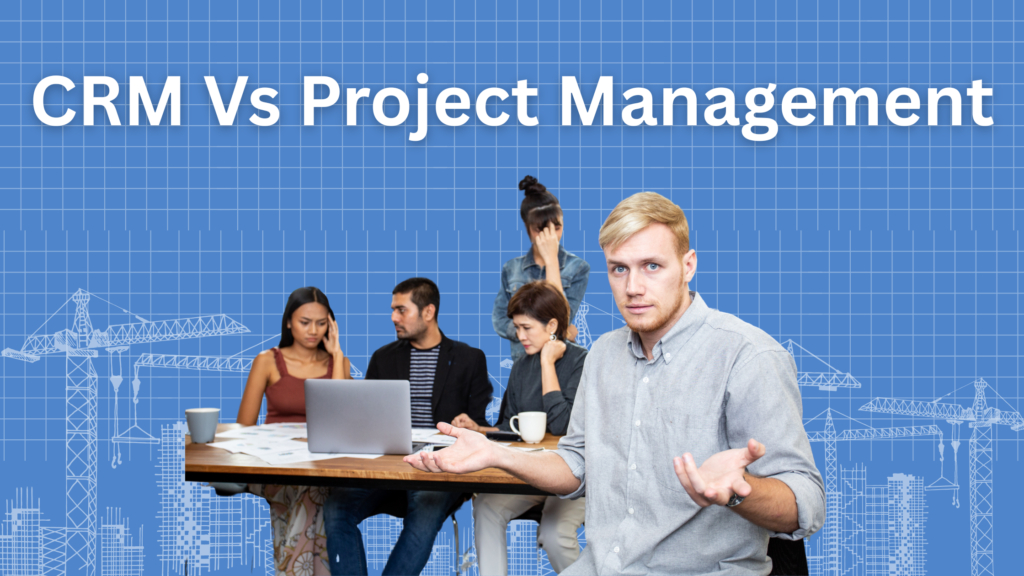
Introduction
In 2025, contractors are switching to AI tools for construction estimating. So, if you’re still crunching numbers in a spreadsheet or double-checking takeoff measurements, do yourself a favor and stop wasting your team’s time and energy. Stop spending days on tasks that AI can do in minutes.
But what exactly is AI estimation, and which tools are worth your time?
In this blog, we’ll break it all down:
1) What AI construction estimating really means
2) The top 5 AI estimating tools dominating the market in 2025
3) How to choose the right tool for your business
4) Tips to make the most out of your AI investment
- Introduction
- Why AI-Powered Construction Estimating?
- Top 5 AI Tools for Construction Estimating
- Choosing the Right AI-Powered Features for Your Business
- Making the Most of AI Estimating Tools
- Conclusion
- Frequently Asked Questions
- 1. Will AI estimating tools replace human estimators?
- 2. How accurate are AI-powered construction estimates compared to traditional methods?
- 3. Can small construction firms afford AI estimating tools?
- 4. How steep is the learning curve for implementing AI in construction estimating?
- 5. How do AI estimating tools integrate with existing construction management software?
Why AI-Powered Construction Estimating?
Manual Estimating Is Slowing You Down
Let’s be honest; estimating used to be a nightmare.
- Blueprints piled up on your desks.
- Measurements were taken by hand.
- Numbers that you had to manually enter into spreadsheets.
- Material costs that you pulled from an outdated supplier list.
And after all that, you still had errors. A small miscalculation on concrete volume or steel rebar pricing could mean thousands of dollars lost on a project.
AI Saves Time and Boosts Profits
AI-powered estimating isn’t just about speed, it’s also about accuracy and profitability.
- AI eliminates human errors that lead to budget overruns and change orders.
- Machine learning analyzes historical project data to refine cost predictions.
- AI-powered tools integrate with real-time supplier databases so your pricing is always accurate.
A 2023 McKinsey report found that AI-driven estimating reduces errors by up to 90% and speeds up takeoffs by 80% compared to manual methods. That’s days saved on every bid. Read more on how AI is making construction estimates easier.
Top 5 AI Tools for Construction Estimating
1. Togal AI
1. What does it do?
Togal AI uses advanced algorithms to analyze architectural PDFs and CAD drawings. The platform then converts the visual inputs into structured quantity takeoffs. The estimator can perform estimates and create budget proposals from there. The software is cloud-based and it allows multiple team members to collaborate.
2. Why does it stand out?
Togal AI claims to automate 93% of the takeoff process. This way, the takeoffs are more accurate and can be generated in minutes rather than hours. Additionally, it is easy to integrate the software with other platforms.
2. PlanSwift
1. What does it do?
PlanSwift allows users to perform takeoffs from blueprints, PDFs and scanned construction plans. The estimators can easily click and drag over digital drawings and generate material lists & labor quantities. It also offers multiple integrations.
2. Why does it stand out?
PlanSwift claims to reduce 92% of preparation time by cutting out manual measurements and calculation tasks. The software is easy to use and can be used for both residential and commercial construction.
3. CostOS by Nomitech
1. What does it do?
CostOS lets estimators perform 2D and 3D takeoffs using AI. It allows importing BIM models and traditional drawings and connects them to historical cost databases. Other than that, CostOS offers cost libraries, Monte Carlo simulations, etc.
2. Why does it stand out?
CostOS is not a construction-specific CRM; it is used across industries such as oil & gas, government projects, etc. The software claims to deliver 95% accuracy in cost forecasting. Large EPC firms prefer CostOS because of its features, such as blending BIM, 5D estimating, risk modeling, etc.
4. Autodesk
1. What does it do?
Autodesk offers field management, cost estimating, and designing features all in one. Users can share version-controlled documents, RFIs, submittals, etc. It offers integrations with multiple other software.
2. Why does it stand out?
Autodesk’s USP is its full lifecycle continuity, starting from design to estimation and field management. The platform is built for everyone, from specialty contractors and subcontractors to billion-dollar construction companies.
5. BLDON
1. What does it do?
BLDON uses AI to measure 2D & 3D takeoffs and quantify the estimated material and labor cost of construction plans. You can upload PDFs, CAD drawings, images, and blueprints to the software, and it will perform takeoffs within minutes. The platform also lets you create assemblies, conditional takeoff rules, and revise comparisons all in a single, beginner-friendly interface.
2. Why does it stand out?
BLDON stands out because it is a single source of all construction management tools. It is highly visual and has a user-friendly workflow. Its estimating module has advanced customization options, which include multi-use assemblies, real-time dimension calibration, editable measurement zones, and much more. In short, the tool comes in handy when your estimating team is working on complex takeoffs across multiple projects and wants precision.
Choosing the Right AI-Powered Features for Your Business
The right features depend on your business size and project complexity. It should also integrate well with your existing workflows. Let’s break it down so you know exactly what to look for.
Project Size and Complexity: What AI Features Do You Really Need?
- For small contractors handling residential or light commercial work, you need a tool that automates takeoffs, speeds up material calculations, and provides accurate labor cost estimates.
- For mid-sized firms, AI should handle multi-trade estimates and sync with scheduling software to track labor needs and subcontractor costs.
- For large-scale contractors, AI-powered risk analysis, historical cost comparisons, and predictive budgeting become essential.
According to a McKinsey report, AI-driven cost estimation can reduce project overruns by up to 15%, which is massive when dealing with large-scale projects.
Integration With Existing Tools: Avoid Data Silos
AI estimating tools should talk to your existing accounting, CRM, and procurement software. If they don’t, you’ll waste time manually moving data between systems. Or you can try our all-in-one platform, where you get every single feature on one dashboard.
See BLDON in action
You can try our all-in-one platform, where you get every single feature on one dashboard.
Your AI estimating tool should work in sync with your bidding and CRM tools. If it doesn’t, your teams will waste a lot of their time manually moving data between systems. Or better, you can try an all-in-one platform, where every single tool you need for your construction project is available on a single dashboard.
- Seamless integration with other management tools means fewer errors and faster approvals.
- Cloud-based accessibility allows teams to access real-time estimates from the field or office.
- API connectivity ensures that estimated data flows smoothly into invoicing and budgeting processes.
Studies by Construction Executive show that teams waste 30% of their time switching between disconnected tools. Our all-in-one platform eliminates this problem by ensuring your estimating data syncs effortlessly.
Ease of Use: How We Make AI Adoption Simple
AI sounds complex, but it doesn’t have to be. Our estimating software is designed for contractors, not tech experts.
- Intuitive dashboard with drag-and-drop functionality.
- No steep learning curve; you can get started without weeks of training.
- Guided AI suggestions help refine estimates without needing deep software knowledge.
A contractor using our platform cut bid preparation time from 6 hours to just 90 minutes, all because the system automated takeoffs and material calculations in real-time.
Making the Most of AI Estimating Tools
Having AI-powered estimating software is one thing. Using it to its full potential is another. Let’s look at how to maximize its value and ensure you’re getting the most accurate, profitable estimates.
Training Your Team: Maximizing AI’s Potential With Proper Onboarding
You wouldn’t hand a new hire blueprints without context, right? AI tools need the same level of training for your team to use them effectively.
- Start with hands-on training. Walk estimators through real projects using AI-driven takeoffs and calculations.
- Use video tutorials and on-demand support. Many teams learn better with visuals than just reading guides.
- Assign AI champions on your team. These will be the go-to people for troubleshooting and best practices.
Studies show that companies that invest in software training see a 50% increase in productivity. We offer built-in training resources to help your team get up to speed quickly.
Keeping Cost Databases Updated: Real-Time Pricing for Accurate Estimates
A major advantage of AI is automated cost updates, but only if you keep your databases in sync with real-world material and labor pricing.
- Regularly update material costs. AI can adjust estimates based on price fluctuations.
- Sync labor rates with union agreements or subcontractor contracts.
- Use AI-driven historical data to see pricing trends and plan for seasonal cost increases.
A general contractor using our platform noticed their estimates were 10% lower than actual costs due to outdated labor rates. After syncing real-time pricing, their bids became 100% more accurate, reducing profit loss.
Using AI Insights for Strategic Bidding: Winning More Profitable Projects
AI doesn’t just speed up estimating, it also helps you bid smarter.
- AI-powered cost comparisons let you see which jobs are more profitable before committing.
- Predictive analytics help identify risks and cost overruns before they happen.
- Automated bid adjustments let you tweak pricing to stay competitive without cutting into profits.
Research from Dodge Construction Network found that contractors using AI-driven estimating win 20% more bids than those relying on traditional methods. Our AI insights give you a competitive edge, ensuring every bid is both competitive and profitable.
Conclusion
Let’s be real: Construction estimating isn’t just about plugging in numbers. It’s also about staying competitive and landing profitable jobs. If you’re still relying on manual takeoffs and spreadsheets, you’re making the process harder than it needs to be. AI estimating doesn’t just speed things up; it reduces costly mistakes and frees up your time for what actually grows your business.
Think about the last project where you underestimated material costs or labor hours. That hit your profits, right? Or maybe you bid too high and lost the job altogether. Our AI-powered estimating ensures that your bids are competitive and your profits are protected. No more second-guessing, just decisions that make sense for your bottom line.
If you’re serious about saving time and increasing profitability, it’s time to make the switch. Bldon.com’s AI tools for construction estimating give you real-time cost insights and a smoother estimating process. Don’t get left behind; start using AI to win more bids and maximize your profits today.
Frequently Asked Questions
1. Will AI estimating tools replace human estimators?
Not at all. Think of AI as your trusty sidekick, handling the grunt work like crunching numbers and spotting patterns. This frees you up to focus on the nuanced decisions that require human judgment. AI enhances your capabilities; it doesn’t replace them.
2. How accurate are AI-powered construction estimates compared to traditional methods?
AI tools can significantly improve accuracy by analyzing vast amounts of data and learning from historical projects. They reduce human error and provide more precise estimates. However, the quality of the output depends on the quality of the input data. So, it’s essential to keep your data clean and up-to-date.
3. Can small construction firms afford AI estimating tools?
Absolutely. Many AI solutions are scalable and offer pricing models suitable for businesses of all sizes. Investing in AI can lead to long-term savings by streamlining your estimating process and reducing costly errors. It’s worth exploring options that fit your budget and needs. Plus, adopting AI early on can give you an edge in your construction business. You can read more on why AI is the future of construction estimating.
4. How steep is the learning curve for implementing AI in construction estimating?
While adopting new technology always comes with a learning curve, many AI estimating tools are designed with user-friendliness in mind. With proper training and support, your team can get up to speed relatively quickly. The initial effort pays off by making your estimating process more efficient and accurate.
5. How do AI estimating tools integrate with existing construction management software?
Most AI estimating tools are built to play nicely with popular construction management software. They often offer integrations or APIs that allow seamless data flow between systems, reducing manual data entry and the risk of errors. Before choosing a tool, ensure it’s compatible with your current software stack.


